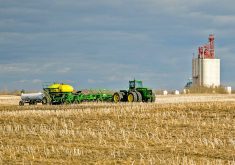Long-promised regulations requiring all gasoline sold in Canada to contain at least five per cent ethanol will come into effect Dec. 15, the government announced last week.
“Support for renewable fuels is support for farmers, rural communities and our economy,” Agriculture Minister Gerry Ritz said in a statement. “This is a vital step in generating new market opportunities for our farmers and maximizing Canada’s high-quality resources to produce food and fuel for the world.”
The announcement was welcomed by Gordon Quaiattini, president of the Canadian Renewable Fuels Association. “This is a milestone day for renewable fuels in Canada. These regulations will help deliver new jobs, new rural growth, and considerable greenhouse gas reductions.”
Read Also

Your best (and easiest) holiday dainty tray
Make-ahead recipes, store-bought goodies and co-operation with friends and family: Here’s how to throw together a stunning, low-stress tray.
Still to come from Ottawa are regulations requiring two per cent renewable content in diesel fuels and heating oil.
Tests of biodiesel blends in railway locomotives and highway tractors have raised questions as to whether the industry can yet deliver high-quality blended fuel that won’t harm the engines in use today.
The government said the two per cent biodiesel requirement would proceed once it can be successfully demonstrated that the blend will perform under a range of Canadian conditions.
Ottawa’s expectation is that these biofuel regulations, which are fast becoming minimal compared to developments in other countries, will reduce greenhouse gas emissions by up to four megatonnes in 2012 – about the equivalent of taking a million vehicles off the road. The long-term goal is to reduce emissions by 17 per cent by 2020.
Quaiattini said biofuel makers are pleased the regulations incorporate the cost advantage of ethanol over gasoline. “We believe ethanol-blended gasoline could save Canadian consumers $1.7 billion over the next 25 years.”
Ritz said Canada is working with the U. S. toward common North American standards for regulating greenhouse gas emissions from vehicles, and has recently published, draft regulations for vehicle tailpipe emissions under the Environmental Protection Act. The standards are aligned with those of the U. S.
“Building on that successful collaboration, we will continue to work together to do the same for heavy-duty vehicles.”














